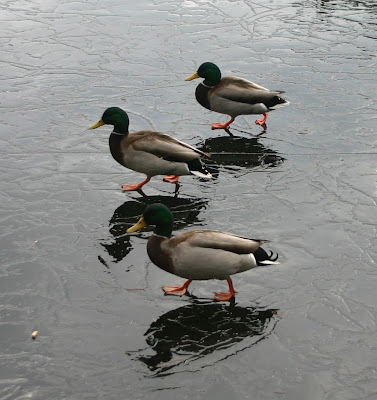In my original
Humdinger Hummingbirds post, I touched on the variety of hummingbirds that exist and how they are different. With over 300 species, I barely scratched the surface so I decided to do another post featuring some of the spectacular hummingbirds found only in South America. In fact the majority of species occur in South and Central America with only 48 species living and/or breeding in the U.S. and Mexico. Hummingbirds are only found in the Western Hemisphere so if you are thinking of going to Europe to bird watch for hummingbirds, you will be sadly disappointed because you will find nary a one. If you want more pictures and information on the hummingbirds of South America, you can
click here.
Like many bird species, males are more colorful than their female counterparts. Unless noted, the photo is the male member of the species. (Okay, so call me a female chauvinist.)
Hummingbirds come in all kinds of colors and combinations.
Amazilla Hummingbird Source: Wikipedia
Ruby-topaz hummingbird Source: Wikipedia
Blue-chinned saphire Source: Wikipedia
Juan Fernandez Firecrown Source: Wikipeida
Velvet Purple Coronet Source: Wikipedia
Not only are the males and females colored differently, sometimes they look like entirely different species.
Male Violet-crowned woodnymph Source: Wikipedia
Female Violet-crowned Woodnymph
From those photos, you might think the female is larger than the male, but the opposite is actually true.
As you can also see, they may be tiny birds, but they can have an attitude!
In another example of the difference in sexes...
Female Long-tailed Sylph
Male Long-tailed Sylph
only the male has the long tail. And the tail does matter - when the female looks for a mate, she chooses the male with the longest one.
Some hummingbirds seem to shy away from the limelight with such colorful eye-catching plumage, but they can't help but show just a little flash.
Green-backed Firecrown Source: Wikipedia
Brown Violetear Source: Wikipedia
Then again other hummingbirds love the bling!
Frilled Coquette Source: Wikipedia
Tufted Coquette Source: Wikipedia
Hooded Visorbearer Photo by Ciro Albano Source: Bird Forum
Wire-crested Thorntail Source: Wikipedia
The wire-crested thorntail is aptly named as is the Snowcap...
Source: Wikipedia
and the Glowing Puffleg!
Well, definitely the Puffleg part.
I have to add two more hummingbirds that are NOT from South America both because of their color.
Jamaican Mango Source: Wikipedia
As its name implies it is only found in Jamaica. And another purple hummingbird - one of my favorite colors.
Antillean Crested Hummingbird Source: Wikipedia
You could say he is found in the U.S., although not in the lower 48, but on many islands including the U.S. Virgin Islands.





































+wiki.jpg)



+wiki.jpg)




